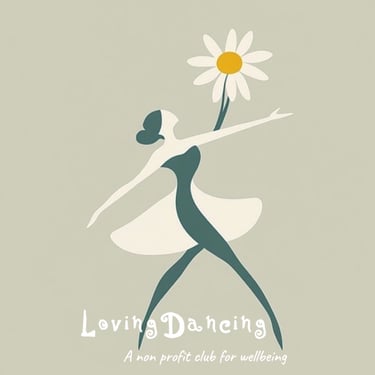Why physio is so important, what does it mean to prevention and recovery?
For (ballet) dancers, **rehabilitation (rehab) or physio** is crucial due to the physical demands of the art form. Ballet involves repetitive movements, extreme flexibility, and a high level of strength, all of which can lead to injuries, both acute and chronic. **Effective rehab** ensures that dancers can recover from injuries safely and return to performing at their full capacity, while minimizing the risk of re-injury.
PREVENTION
Mrs. DL
10/7/20242 min read


Importance of Physio for Ballet Dancers:
1. Injury Recovery: Proper rehabilitation helps heal injuries such as sprains, fractures, tendinitis, and muscle strains. It allows dancers to regain their strength and mobility progressively, reducing the chances of long-term damage.
2. Preventing Re-injury: A well-structured rehab plan helps address the underlying causes of the injury. For instance, correcting improper alignment, strengthening weak muscles, and improving flexibility can prevent the same injury from happening again.
3. Maintaining Dance Technique: Ballet requires precise technique, and being out of practice due to injury can affect performance quality. Rehab helps dancers maintain or regain their technical skills while working on physical recovery.
4. Mental and Emotional Support: Injuries can be emotionally challenging for dancers who are used to performing at high levels. Rehab provides a structured path toward recovery, giving them hope and a sense of control over their progress.
Role of a Good Physical Therapist or Rehabilitation Specialist:
A qualified rehab specialist plays a vital role in a dancer’s recovery and long-term performance:
1. Tailored Recovery Plans: A good therapist will develop personalized rehab programs tailored to the specific injury and the dancer’s body. This includes exercises that strengthen weak areas, restore flexibility, and maintain muscle balance.
2. Movement Analysis: Dancers need to maintain specific biomechanics to prevent injuries. A rehab specialist can analyze a dancer’s movements and correct improper techniques that may lead to injury, such as faulty foot alignment or poor posture.
3. Cross-training Support: Rehab often includes cross-training methods to build strength and endurance in muscles not typically used in ballet. This reduces overall strain on joints and improves performance resilience.
4. Mental Coaching: A good therapist understands the emotional toll of an injury on a dancer’s mental health. They can offer encouragement and guidance, helping the dancer stay motivated throughout the recovery process.
5. Safe Return to Dance: One of the most important aspects is ensuring that dancers return to performing only when fully healed. A physical therapist can guide this transition, advising on how to safely reintroduce ballet movements.
What a Physio Workshop for Ballet Dancers Offers:
A Physio workshop for ballet dancers provides in-depth education and practical tools for injury prevention, management, and recovery. Such workshops typically include:
1. Injury Prevention Techniques: Workshops often teach dancers how to prevent common injuries through proper warm-ups, alignment, stretching, and strengthening exercises.
2. Conditioning Programs: Dancers are shown specific exercises to improve core strength, joint stability, and flexibility. This helps in conditioning their bodies to withstand the demands of ballet.
3. Movement Analysis and Correction: Participants may undergo individualized movement assessments to identify improper biomechanics. Instructors demonstrate how to correct alignment issues that can lead to injury.
4. Stretching and Flexibility Training: Stretching workshops focus on increasing flexibility safely, helping dancers improve their range of motion without putting unnecessary strain on their bodies.
5. Cross-training and Strength-building: Workshops include cross-training techniques such as Pilates, yoga, and resistance training, which help dancers build overall strength and protect their bodies from overuse injuries.
6. Psychological Support: Some workshops may also cover mental health strategies, helping dancers cope with the emotional and psychological challenges of injury and recovery.
7. Nutrition and Recovery Education: Nutrition is often addressed in workshops to teach dancers how to fuel their bodies for both recovery and peak performance.
In summary, physio is essential for ballet dancers to recover safely and maintain their performance level. A skilled physio specialist provides personalized care, while physio workshops offer dancers valuable tools for injury prevention and recovery, helping them stay healthy throughout their careers.
DancingLoving - your non profit association for holistic wellbeing
mrs.dancingloving / Mrs. DL


Spotify: community music & podcast sharing
WhatsApp: open community
Instagram: mrs.dancingloving
LinkedIn & Facebook: stay tuned!
Newsletter: sign in in "contact"
